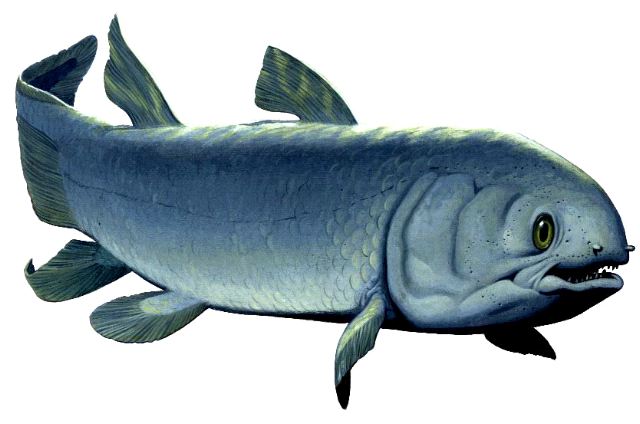[Recent Entries][Archive][Friends][User Info]
| September 27th, 2011 | |
|---|---|
| 08:12 pm [industrialterro] [Link] |
Miguashaia Miguashaia is a genus of prehistoric lobe-finned fish which lived during the Devonian period. Miguashaia is the most primitive coelacanth fish. Miguashaia bureaui is the most primitive of all the actinistian fishes. Instead of having three lobes, its tail was epicercal. And in the adult, the anal fin had almost no fleshy lobe, whereas the second dorsal fin had none at all. The present-day coelacanth, Latimeria chalumnae, has a very monotonous diet. In complete darkness, it hovers vertically with its head down deep in the Indian Ocean, skimming the bottom in search of prey. Thanks to a rostral organ at the tip of its muzzle, it can detect natural electric fields generated by small animals like crustaceans and other invertebrates. Once a potential meal is located, the coelacanth drops downwards and swallows it. The central tail lobe is what allows the fish to perform this delicate manoeuvre, known as headstand feeding.
Tags: Вымершие рыбы, Девон, Лопастепёрые |

